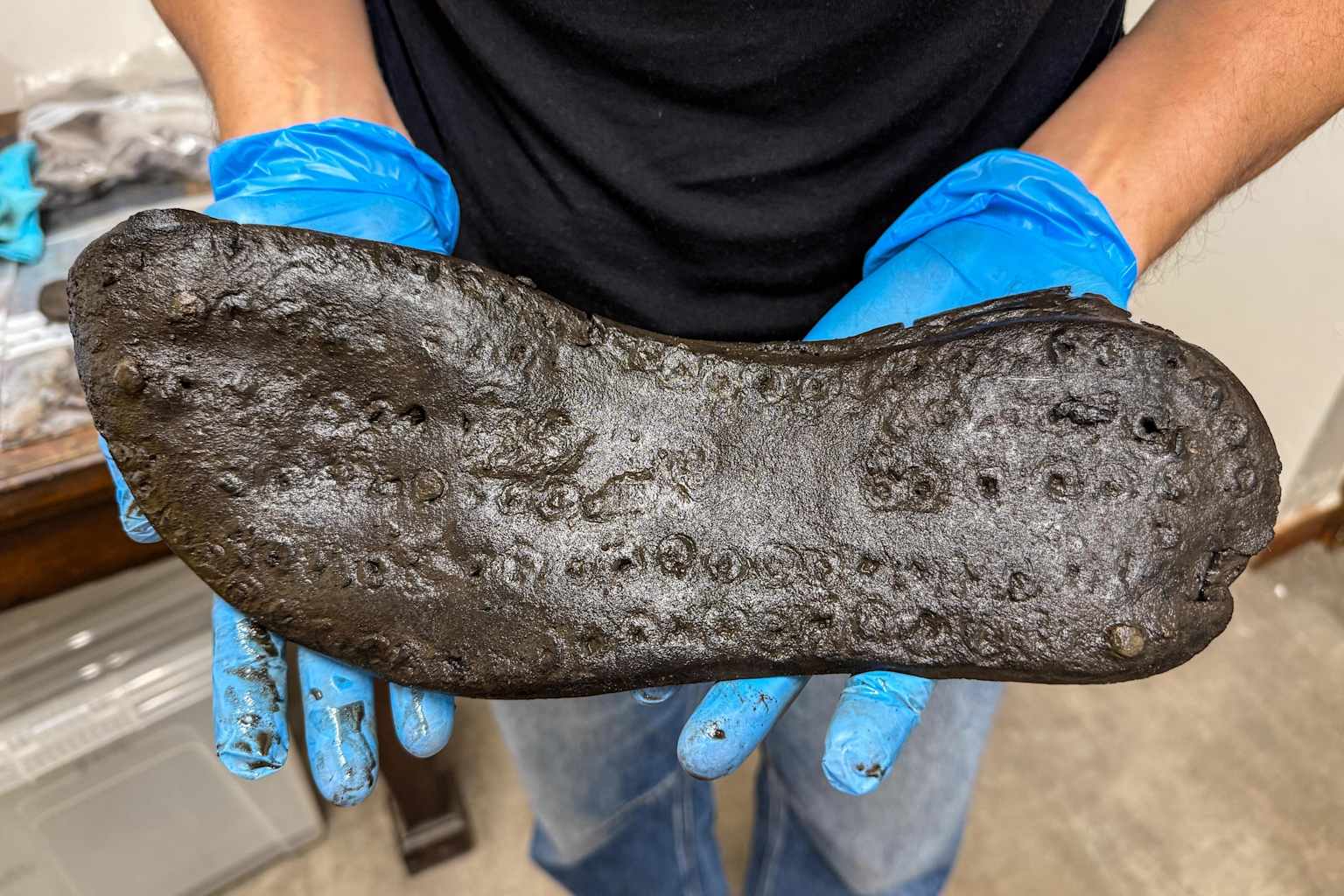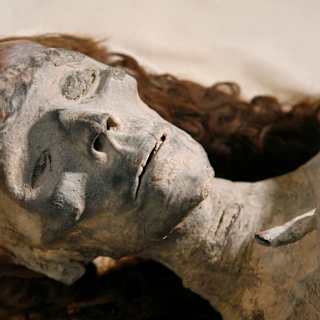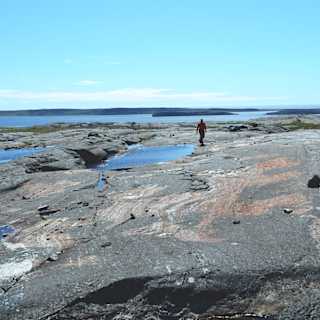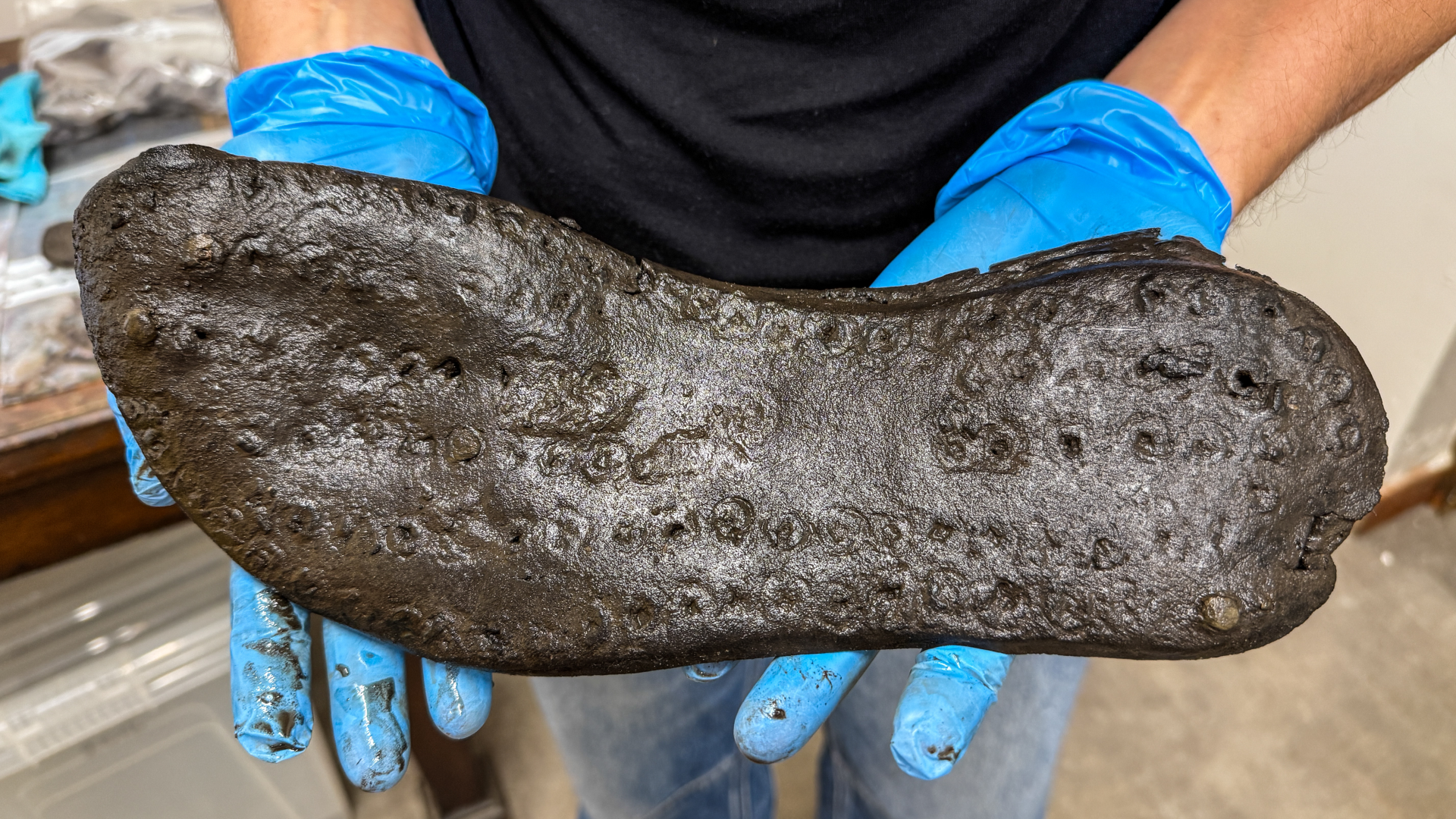- An Outsized Mystery
- A Statistical Anomaly
- Implications for Roman Britain
Archaeologists working at a Roman fort in northern England have uncovered eight leather shoes from nearly 2,000 years ago that measure the equivalent of modern size 13 to 14, raising questions about the physical characteristics of the people who once lived along Hadrian's Wall. The discovery at Magna Roman Fort in Northumberland represents an unusual concentration of large footwear that differs markedly from finds at other Roman sites in Britain.
The shoes, found in defensive ditches that Romans also used as waste dumps, challenge assumptions about the physical stature of people stationed at this remote imperial outpost. While the average Roman shoe measured 24 to 26 centimeters in length, a quarter of the 32 shoes recovered at Magna exceed 30 centimeters.

Senior archaeologist Rachel Frame told the BBC that the leather shoes were preserved by low-oxygen conditions in waterlogged soil1. The largest specimen measures 32.6 centimeters, equivalent to a UK size 14 or US size 162.
"We have to assume it's something to do with the people living here, having bigger feet, being potentially taller but we don't know," Frame said1. "Are the people living there from a specific region? Could that be why their shoes are so much larger? But at the moment, it's sort of, well, this is unusual."
Elizabeth Greene, an archaeologist at Western University in Ontario who specializes in ancient footwear, noted the contrast with nearby sites. "I think there is something very different going on here at Magna, even from this small sample uncovered it is clear that these shoes are much larger on average than most of the Vindolanda collection," she said2.
The concentration of large shoes at Magna stands in stark contrast to the nearby fort of Vindolanda, where archaeologists have recovered more than 5,000 ancient leather shoes over decades of excavation1. Only 16 of the 3,704 measurable shoes from Vindolanda—just 0.4 percent—exceeded 30 centimeters in length1.
At Magna, 25 percent of recovered shoes fall into this category, according to Live Science1. Even accounting for potential shrinkage over time, researchers say the disparity remains notable.
The findings add complexity to understanding the diverse populations that served along Hadrian's Wall, built around A.D. 122 to mark the northern boundary of the Roman Empire1. Andrew Birley, director of excavations at the Vindolanda Charitable Trust, said the discovery "reminds us that not every population was the same, that wide variations between the regiments and people who served along Hadrian's Wall could be cultural and physical"2.
"We can only celebrate and marvel at the diversity and differences of these people if we can still see them in the archaeological data we gather today," Birley added2.






